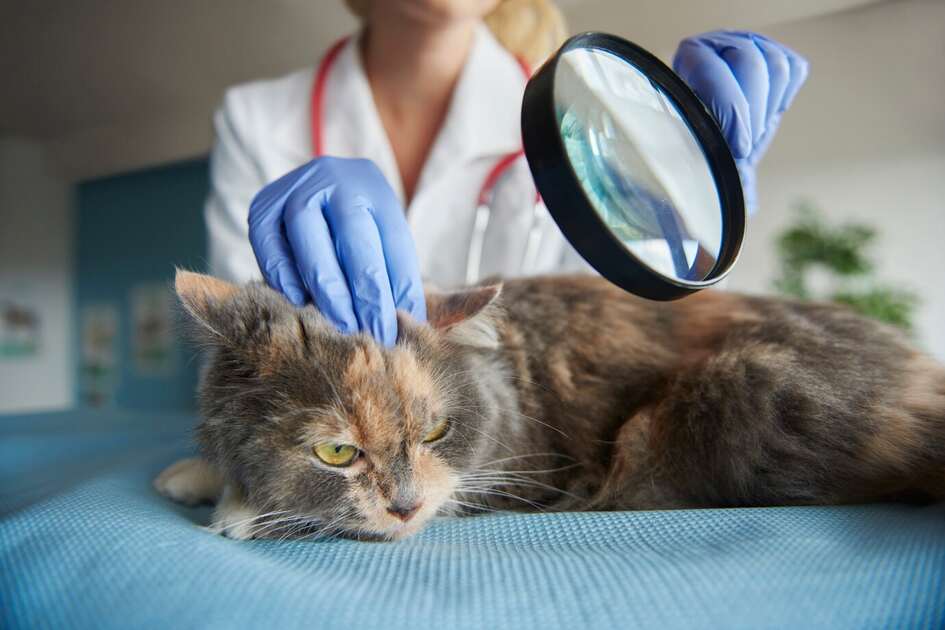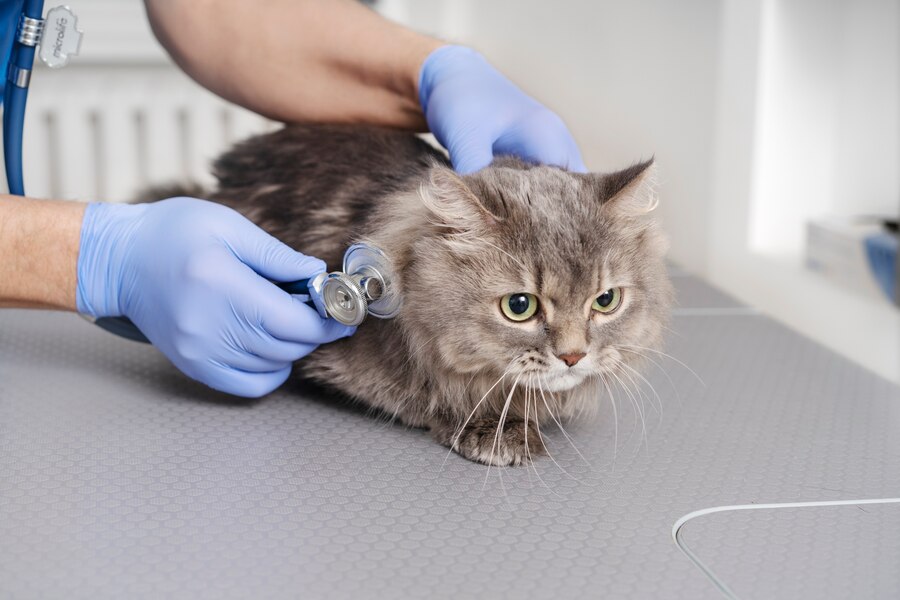
Cerenia (maropitant citrate) is a commonly used medication in veterinary medicine to control both nausea and vomiting in cats, as well as in dogs. While it is a mainstay of the veterinary world, effective in treating nausea and motion sickness as well as other gastrointestinal disturbances. Top uses, benefits, side effects, and how to use a pet owner’s guide to Cerenia for cats is a must-read for cat owners.
This article is a complete guide to cerenia for cats; we cover how it works, what its uses are, potential side effects, etc.
1. What is Cerenia?
Maropitant citrate (Cerenia) Cerenia is an NK1 receptor antagonist that acts by blocking the action of substance P, a neuro messenger implicated in emesis. Originally made for dogs, the drug is equally effective in cats. It is commonly used to control acute vomiting and prevent vomiting caused by chemicals (e.g., chemotherapy), surgery, or other conditions that could cause cats to form nausea.
The two are in different forms: the first one comes as a tablet and the second, is in injectable form for administration either through oral way or intravenously depending on what kind of Cerenia your cat needs.
2. How Does Cerenia Work in Cats?
Cerenia blocks substance P from binding to NK1 receptors in the brain. As long as Cerenia can inhibit the action of substance P, it should be a potent anti-vomiting medication for cats. This device is especially ideal for those diseases in which vomiting seems like gastritis, pancreatitis, kidney disease, or a large number of medicines.
It acts quite quickly and you will notice the effect within 1-2 hours of taking this drug. It is effective for up to 24 hours after one dose, which may add a convenience factor when trying to prevent nausea and vomiting in cats.
3. Uses of Cerenia in Cats
Cerenia is a drug that has many uses in feline medicine. The following are some of the uses for which Cerenia is typically prescribed in cats:
a. Treatment of Acute Vomiting:
Sudden vomiting may signal a variety of health problems, such as gastrointestinal infections and/or pancreatitis kidney disease, or poison ingestion. Cerenia may be prescribed to stop the vomiting and make him feel a little better while doctors diagnose and treat an underlying cause.
b. Prevents All Types Of Vomiting During Travel
It can be nauseating and distressing for a feline to suffer motion sickness while traveling, resulting in vomiting. One of the more common treatments prescribed for cats that are prone to travel-related nausea, Cerenia for cats is one medication effective in preventing vomiting due to motion sickness.
c. Chemotherapy-Induced Nausea Management:
Chemotherapy is a common therapy for treating some Feline cancers, but it often results in severe vomiting and nausea. Cerenia is prescribed to mitigate these symptoms, which Partington says ultimately enables cats to endure chemotherapy with a higher quality of life.
d. Preoperative and Postoperative Use:
It can be given before and after surgery to help reduce nausea or vomiting associated with anesthesia. This can help decrease the amount of complications and better her recovery.
e. Chronic Kidney Disease (CKD):
One of the nice reasons for vomiting in cats with CKD is that toxins accumulate, and then they vomit. Cerenia can help with vomiting and overall comfort as part of the management plan.
4. Dosage and Administration of Cerenia for Cats
The dosage of Cerenia for cats depends on the cat’s weight, the severity of the condition being treated, and the form of the medication (tablet or injectable). It is essential to follow the veterinarian’s instructions carefully when administering Cerenia.
a. Injectable Cerenia:
Injectable Cerenia is often used in clinical settings for acute cases of vomiting. The usual dosage is 1 mg/kg, administered subcutaneously (under the skin) once daily for up to five consecutive days. The injectable form is fast-acting and is preferred for cats who are vomiting severely and may not be able to keep down oral medication.
b. Cerenia Tablets:
Cerenia tablets are more commonly used for preventing vomiting, especially for motion sickness. The typical dosage is 8 mg per cat, given once daily. For motion sickness, the tablet should be administered two hours before travel and can be used for up to two consecutive days.
It is crucial to avoid crushing or splitting the tablets, as this can affect the drug’s efficacy. If the cat is difficult to pill, the veterinarian may provide tips or alternative methods for administering the medication.

5. Potential Side Effects of Cerenia in Cats
While Cerenia is generally well-tolerated, like all medications, it can cause side effects in some cats. Most side effects are mild and resolve on their own, but it is important to be aware of potential reactions.
a. Common Side Effects:
- Lethargy or drowsiness
- Diarrhea
- Loss of appetite
- Pain or swelling at the injection site (for injectable form)
b. Less Common but Serious Side Effects:
- Allergic reactions (e.g., swelling, hives, difficulty breathing)
- Severe vomiting or diarrhea
- Jaundice (yellowing of the skin or eyes)
- Seizures
If any of these more severe side effects occur, it is important to contact the veterinarian immediately. Additionally, if the cat has pre-existing liver disease, the veterinarian may adjust the dosage or recommend an alternative treatment, as Cerenia is metabolized in the liver.
6. How to Use Cerenia for Cats
The dosage of Cerenia for cats will vary based on the cat, how much it weighs, and how severe their symptoms are at that time. Cerenia needs to be given according to the labeled instructions for it by a veterinarian.
a. Injectable Cerenia:
For severe cases of vomiting, injectable Cerenia is often found in a clinic. Typical dosing is 1 mg/kg subcutaneously (under the skin) once daily for up to five days in a row. This is given by injection and acts quickly, so a group prefers this for cats that are vomiting quite severely to see how much the cat can take down oral medication.
b. Cerenia Tablets:
Cerenia tablets, meanwhile are used to prevent vomiting (as is also the case with motion sickness) Dosage is typically 8 mg per cat once daily. The tablet must be taken two hours before the journey for motion sickness and can be taken at a time over consecutive days.
The efficacy of the drug can be affected if it is crushed or split. If the cat is uncooperative with pilling, additional advice or procedures for giving medication may be provided by your veterinarian.
7. Common Cerenia Side Effects for Cats
Although Cerenia is safe and effective, just like all other medications it can cause side effects in some cats. The side effects are generally mild and disappear on their own, but still knowing what kind of reactions you might have can be very useful.
a. Common Side Effects:
- Lethargy or drowsiness
- Diarrhea
- Loss of appetite
- Injectable pain, injectable swelling
Less Common but Serious Side Effects:
- Allergic reactions (e.g., swelling, hives, difficulty breathing)
- Severe vomiting or diarrhea
- Jaundice (yellowing of the skin or eyes)
Seizures
If any of these more serious side effects occur, call your veterinarian right away. Also, if a cat already has liver disease the veterinarian may decide to alter dosages or prescribe an alternative medication; Cerenia is metabolized by and therefore filtered through the liver.
8. Contraindications/Precautions
Cerenia should be administered with particular caution in specific cats, and has some contraindications:
a. Age and Weight Restrictions:
Not for use in cats under 16 weeks of age. Cerenia is generally avoided in very small cats (less than 2 kg) or younger kittens as safety has not been established.
b. Liver Disease:
Because Cerenia is metabolized in the liver, cats with hepatic disease may need to either receive a reduced dose of this medication or they might not be good candidates for pharmaceutical therapy. Cats receiving long-term Cerenia therapy should have liver function monitored regularly.
c. Concurrent Medications:
Cerenia also interacts with other medications, so if you give it to a cat make sure that the vet is aware of all drugs (including over-the-counter supplements) your felines may be taking. For instance, Cerenia can interact with nonsteroidal anti-inflammatory drugs (NSAIDs), in which the risk of side effects could be elevated.
d. Pregnant or Lactating Cats:
The safety of pregnant and lactating cats has not been well established; therefore, its use should be based on a risk-benefit assessment by the veterinarian.
9. Cerenia vs. Other Anti-Nausea Medications for Cats
While Cerenia is a popular option for cats, it only represents one anti-nausea medication on the market. Stimulant alternatives: Tickets for Ondansetron or Metoclopramide are other options. So how does this Cerenia stack up to other options?
a. Ondansetron:
Ondansetron is a serotonin receptor antagonist most commonly used to treat nausea and vomiting in humans. It is also off-label used in cats, especially for chemotherapy associated with vomiting. Ondansetron for this purpose is effective but may not last as long as Cerenia and certainly does need to be dosed more often.
b. Metoclopramide:
Metoclopramide is a prokinetic agent which accelerates the passage of gastrointestinal substances and feces through the bowel mimicking normal fasting physiology while presumably preventing vomiting. It is occasionally used in cats with gastrointestinal motility disorders. Still, it is less effective than Cerenia at treating nausea and carries a higher risk of side effects (with behavioral changes being the most common).
c. Comparison Summary:
Cerenia is frequently used for its wide spectrum of activity, longer half-life, and lower potential (though not absence) to cause adverse effects. However, the choice of medication is always given per the individual cat’s requirement and veterinary consideration.
10. Possible Long-term Use in Cats of Cerenia
In many cases, Cerenia is employed for the transient relief of vomiting impulses but in reality, some medical conditions such as kidney illness or cancer are likely to involve chronic treatment rendering a need for continuous long-term usage if seen appropriate. So goose kitties need to work with the vet to monitor health and adjust the dose as required.
Routine blood work may need to be performed from time to time to assess liver function and determine that no long-term deleterious effects are taking place as a result of Cerenia. The veterinarian may also suggest using the drug intermittently to monitor how the cat does off of it as well as minimize potential medication tolerance.
11. Cerenia for Cats: Price and Availability
Cerenia is available by prescription only at veterinary clinics and online pet pharmacies. It can cost differently based on the form (injectable versus tablet), dosage, and supplier. A box of Cerenia tablets may cost you between $20 and $30 on average, however, the injectable form will be more expensive as it needs administration by a vet.
It will be recommended to determine what your pet insurance plan can cover in terms of Cerenia, particularly if it is being used long-term. The insurance company may reimburse Cerenia’s cost, so it is a good idea to ask them.
12. Administering Cerenia to Cats
Like most cats, getting a cat to take medication can be difficult because the cat does not like it. We present before you a few tips to accomplish this easily:
a. Use a Pill Dispenser:
To deliver the tablet directly into your cat’s mouth This way you avoid using your fingers, so there’s no risk of injury (very important)
b. Hide the Tablet in Food:
If the cat is eating, we can place it in a very delicious wet diet or inside of pill pocket. Though, you must also take steps to see that the cat consumes it in full.
c. Apply Gentle Restraint:
Loop a cat in a towel to keep them calm and prevent access to the ear during administration.
d. Follow Up with a Treat:
After administering the medication, reward your cat with a yummy treat to help create positive associations.
Conclusion
Cerenia for cats is a strong and flexible drug that is very helpful for controlling the nausea and vomiting of cats. Cerenia provides relief for and improves the lives of thousands of cat patients, used for chronic diseases as well as acute conditions (or in some cases even when there is a risk that these acute conditions will occur). Just like any other medication, use Cerenia wisely (for instance based on the latest Cerina instructions ) and be cognizant of possible side effects or precautions.
By learning as much about Cerenia and its effects, cat owners can do everything they can to make sure their cats are being properly cared for. If you think that your cat might require some Cerenia, make sure to consult with a vet regarding the best treatment.
FAQs
Cerenia works after 1 to 2 hours of application. Its effects can last for up to 24 hours, rendering it a wide-spectrum agent in the treatment of nausea and vomiting (either as an acute or chronic disease) that affects cats.
Cerenia can indeed be given to cats with CKD where vomiting is a common symptom. However, because Cerenia is metabolized in the liver your vet may have to adjust dosing and watch your kitty’s liver enzymes closely during treatment.
Cerenia is safe for cat use Cerenia facilitates the stomach and intestinal mobility by blocking NK-1 receptors. For long-term use; for example in cats with chronic conditions – dosage and frequency will be calculated by an optimum based on the needs of an individual cat. Prolonged use may require that blood parameters be checked regularly to stay on the safe side.




